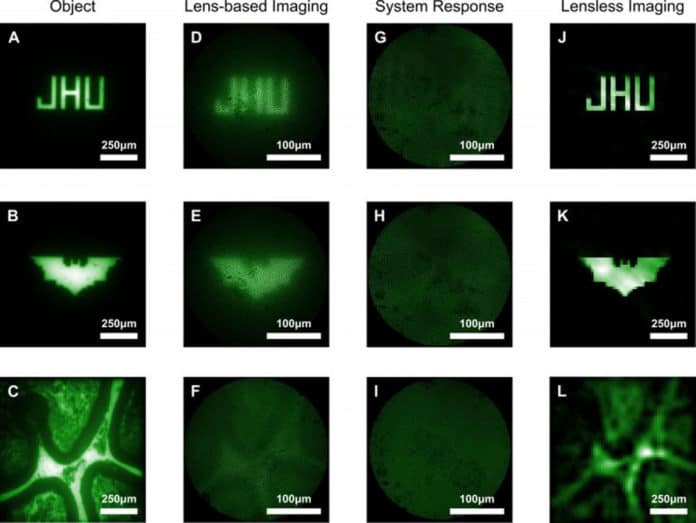Ultra-miniaturized microendoscopes are vital for numerous biomedical applications. Such minimally invasive imagers allow for navigation into hard-to-reach regions and observation of deep brain activity in freely moving animals.
Currently used standard microendoscopes require larger, more invasive lenses for better imaging. Although lensless microendoscopes exist, the optical fiber within that scans an area pixel by pixel frequently bends and loses imaging ability when moved.
Johns Hopkins engineers have devised a new lensless ultra-miniaturized endoscope, the size of a few human hair in width, that is less cumbersome and can capture higher quality images.
To create this lensless ultra-miniaturized endoscope, scientists used a coded aperture or a flat grid that randomly blocks light, creating a projection in a known pattern akin to randomly poking a piece of aluminum foil and letting light through all of the small holes. This makes a messy image, yet one that gives an abundance of data about where the light originates, and that data can be computationally recreated into a more clear picture. In their investigations, scientists took a gander at beads in different patterns on a slide.
Mark Foster, an associate professor of electrical and computer engineering at The Johns Hopkins University, said, “For thousands of years, the goal has been to make an image as clear as possible. Now, thanks to computational reconstruction, we can purposefully capture something that looks awful and counterintuitively end up with a clearer final image.”
This new microendoscope doesn’t require movement to focus on objects at different depths. Instead, it uses computational refocusing to determine where the light originated from in 3 dimensions. This allows the endoscope to be much smaller than a traditional one that requires moving the endoscope around to focus.
Their findings were published today in Science Advances.
